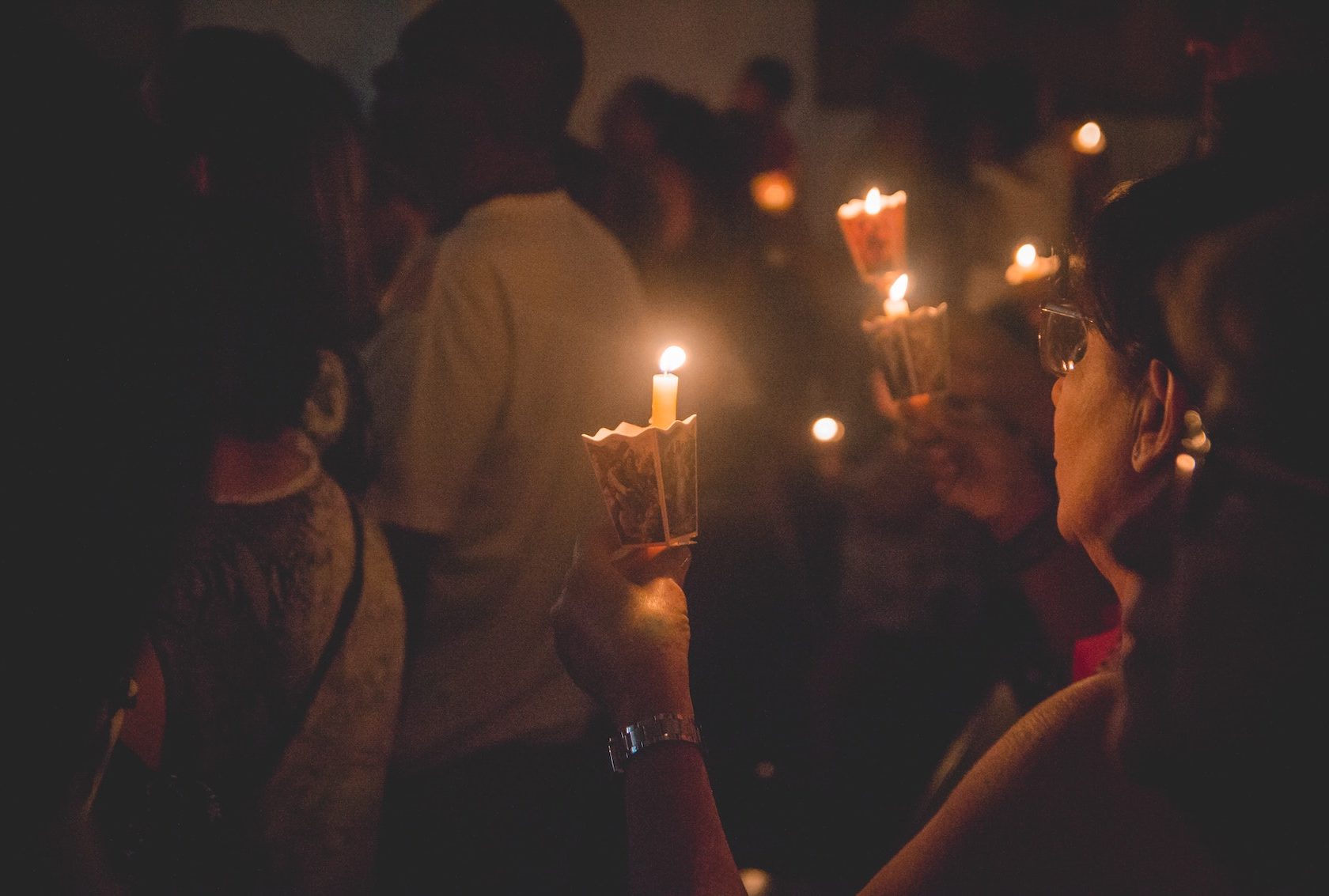THE HEART OF THE LITURGICAL YEAR
The liturgy of Easter Night used to be considered the most significant celebration of all. In the course of the Middle Ages, it was gradually moved earlier in the day (anticipated), until it was finally celebrated early on Saturday morning. Thus it became mainly a celebration of the clerics with limited participation of people and its symbolism (Easter candle, new light) was hard to perceive. The liturgical movement in the Catholic Church strove for the restoration of the original form which happened after the liturgical reform in 1951.
The Easter Vigil consists of the following parts:
- Lucernarium – The Blessing of the Fire and Preparation of the Candle
- The Liturgy of the Word
- Baptismal Liturgy
- The Liturgy of the Eucharist
FIRE AND CANDLE
The bringing of light and greetings The Light of Christ used to be part of evening gatherings of early Christians for devotions and liturgy. This light rite was more elaborated especially on the eve of Easter Sunday. The Easter Proclamation (Exultet) derives from such a light celebration and the present Exultet evolved from a text used in northern Italy or Southern Gallia. The light celebration did not always open the Easter Vigil, but in many places rather marked the transition from mourning to joy (between the liturgy of the Word and the liturgy of the Eucharist).
The light celebration starts with the blessing of the fire and preparation of the Easter candle (both of a relatively recent origin, from the 12th century). The church is in the dark and the faithful gather around the new fire. Once the fire and the candle are blessed, all enter the Church following the candle, symbolizing Christ bringing light into darkness. The Exultet chant praises the light that illumines the night and the victory gained by Christ, anticipated by the exodus from Egypt.
THE LITURGY OF THE WORD
The liturgy of the Word formed a substantial part of the Easter vigil and various readings used to be read since the early centuries to highlight the history of passion, death, and resurrection of Jesus. The reading about the departure from Egypt (Exo 12-14) was a firm part of the liturgy and the creation story (Gen 1) as well as the sacrifice of Isaac (Gen 22) are attested very early too. The various local traditions used to use up to 15 different biblical readings (The Byzantine Rite still uses 15 readings).
The emphasis on the passage from darkness to light – from passion to resurrection also resulted in accentuating resurrection and the Easter vigil was transformed into a celebration of the resurrection.
The current liturgy envisions 9 readings total: seven readings from the OT highlight the various stages of the history of salvation. Then, the altar candles are lit and solemn alleluia is intoned. A reading from the NT follows (Rom 6) and a gospel reading (Matt 28).
BAPTISMAL LITURGY
Various local traditions show that baptismal liturgy used to be associated with Easter vigil in different ways (before, or during the Vigil, or even early on Sunday morning). A procession went to the baptisterium / baptismal church for the blessing of water and the actual baptism and then back to the main church for the celebration of the Eucharist. The litany was sung during the procession. Once the number of baptisms declined, the procession and the rite of the blessing of water continued to be celebrated and renewal of baptismal promises came to the foreground.
The liturgy of baptism follows after the gospel and the homily. The prayer for the blessing of water reminds us of the importance of water in the history of salvation (creation – flood – Red Sea – the baptism of Jesus – water from Jesus’ side) and the Easter candle is lowered into the font three times. The actual baptism consists of renunciation of Evil, the profession of faith, baptism, anointing with chrism, and confirmation.
THE LITURGY OF THE EUCHARIST
The newly baptized participate for the first time in the Eucharistic celebration.
The Easter Vigil at SCM takes place at 8.00PM.


